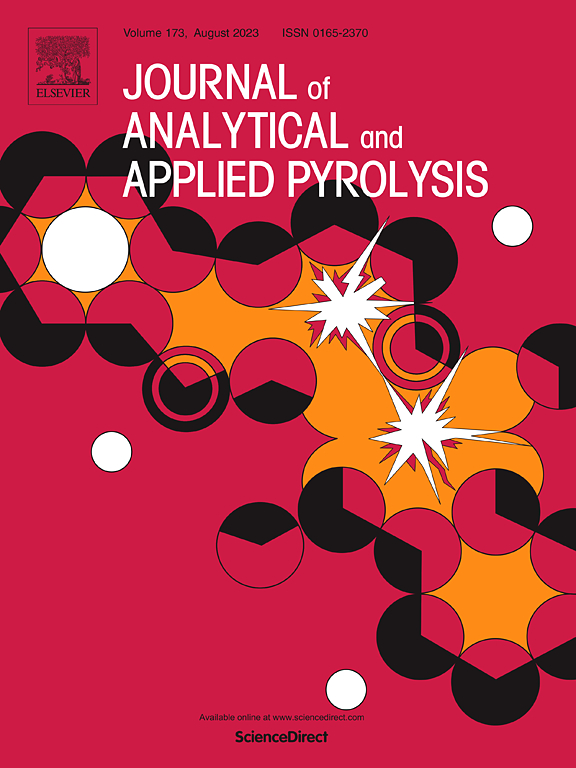Meta-analysis of the fate and transformation of heavy metals during pyrolysis process via data-mining the literature and machine learning
IF 5.8
2区 化学
Q1 CHEMISTRY, ANALYTICAL
引用次数: 0
Abstract
Pyrolysis is attracting increasing attention as a promising waste disposal technology. However, the major challenge for the safe application of biomass pyrolysis products is the presence of heavy metals (HMs) in some biomass. This global meta-analysis was performed by compiling 21029 individual data points from 146 published articles. It elucidated the effects of pyrolysis temperature, feedstock characteristics on the migrations and transformations of HMs during pyrolysis process. Results showed the remaining ratios of Cd, Pb, Zn and Cr were decreased with increasing pyrolysis temperature, whereas increased with higher ash content in feedstock, indicating opposite effects of these parameters. The F1 and F2 of Cd, Pb, Cu, Cr, Zn, As and Ni were predominantly concentrated within 0–10 % at 600°C pyrolysis temperature, especially for As, Cd and Pb which were near zero. The proportions of the F3 fractions for Cd, Zn, and Ni increased first and then decreased with increasing pyrolysis temperature, attaining maximum values at 605.11°C, 513.39°C and 473.58°C, respectively. The remaining ratios of Cd, Pb and Zn were decreased with increasing C, H, O content in biomass. Ash content in biomass exhibited positive correlations with the proportion of Cd_F4, Pb_F4, Cr_F4 and Ni_F3 and negative correlations with Cd_F2, Pb_F2, Pb_F3, Zn_F1 and Mn_F1. S content exhibited positive correlations with Mn_F2 and Cd_F4 and negative correlations with Pb_F3, Ni_F4, Cd_F2, and Zn_F4. Random forest model identified pyrolysis temperature played dominant roles in the change of chemical speciation of HMs, followed by S and ash content in biomass.
利用文献数据挖掘和机器学习对热解过程中重金属的命运和转化进行meta分析
热解作为一种极具发展前景的垃圾处理技术,越来越受到人们的关注。然而,安全应用生物质热解产物的主要挑战是某些生物质中重金属的存在。这项全球荟萃分析是通过汇编146篇已发表文章中的21029个数据点进行的。阐明了热解温度、原料特性对热解过程中HMs迁移转化的影响。结果表明:Cd、Pb、Zn和Cr的剩余比值随热解温度的升高而降低,随原料灰分的增加而升高,两者的作用相反;在600℃热解温度下,Cd、Pb、Cu、Cr、Zn、As和Ni的F1和F2主要集中在0-10 %以内,其中As、Cd和Pb的F1和F2浓度接近于零。随着热解温度的升高,F3馏分中Cd、Zn和Ni的比例先升高后降低,分别在605.11℃、513.39℃和473.58℃时达到最大值。Cd、Pb、Zn的剩余比值随生物量C、H、O含量的增加而降低。生物量灰分含量与Cd_F4、Pb_F4、Cr_F4和Ni_F3的比例呈正相关,与Cd_F2、Pb_F2、Pb_F3、Zn_F1和Mn_F1呈负相关。S含量与Mn_F2、Cd_F4呈正相关,与Pb_F3、Ni_F4、Cd_F2、Zn_F4呈负相关。随机森林模型发现热解温度对有机质化学形态的变化起主导作用,其次是生物量中S和灰分含量的变化。
本文章由计算机程序翻译,如有差异,请以英文原文为准。
求助全文
约1分钟内获得全文
求助全文
来源期刊
CiteScore
9.10
自引率
11.70%
发文量
340
审稿时长
44 days
期刊介绍:
The Journal of Analytical and Applied Pyrolysis (JAAP) is devoted to the publication of papers dealing with innovative applications of pyrolysis processes, the characterization of products related to pyrolysis reactions, and investigations of reaction mechanism. To be considered by JAAP, a manuscript should present significant progress in these topics. The novelty must be satisfactorily argued in the cover letter. A manuscript with a cover letter to the editor not addressing the novelty is likely to be rejected without review.

 求助内容:
求助内容: 应助结果提醒方式:
应助结果提醒方式:


